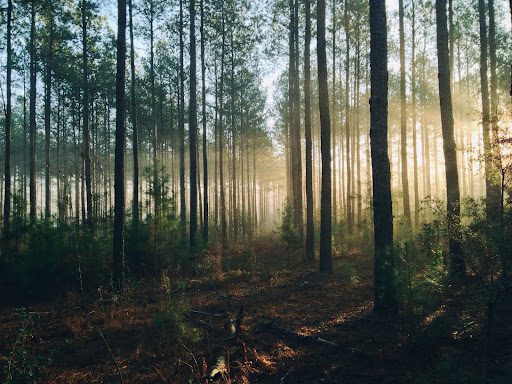There’s a saying that good fences make good neighbors. In a suburb, this is true on its face. In rural settings with acres between houses, it’s unusual to have fences between neighbors. What we have instead are property lines. Sometimes these are posted, clearly marked, and make for great neighbors. Other times these important lines are treated as an afterthought and neglected.
As the clarity of the property line declines, so does respect for what they represent. From a legal standpoint in Maine, if your land isn’t clearly marked and posted, you effectively invite the public onto your land. Unlike some other states, Maine presumes common use of land unless otherwise marked. Even if this wasn’t the case, it’s hard to prove that someone knowingly trespassed on your land if there’s no clear boundary line marking it.
Since good fences and good boundary lines do, in fact, make good neighbors, let’s explore the process of establishing and maintaining boundary lines, so they work to the fullest.

Establishing Boundary Lines
When establishing your property boundary lines, you should contract a professional surveyor to handle the process. As tempting as it is to analyze your deed and trace the lines of your property by yourself, landowner-conducted surveys place all the responsibility for the accuracy of your lines on your shoulders, personally. Considering the main advantage of clearly marked boundaries are the legal protections of assumption of liability conferred on your property and the projects you undertake on your property, it’s important to have a reputable survey conducted and documented to avoid legal troubles in the future.
That said, if you don’t need a formal survey for your purposes, you can make a rough assessment of your land’s corners and, therefore, boundary lines using the description in your deed. Once corners are established and flagged, you and a helper can use rope or fiberglass tape to mark a straight line you can mark or post “no trespassing” signage along.
Please note that if there is an existing corner marker, you cannot move it, even if you think it is erroneously placed under state law. If you think that permanent boundary markers have been tampered with at some point, contact a surveyor who can authoritatively assess the situation.
Reestablishing Boundary Lines
It’s worth noting that if you have had your land surveyed in the past but haven’t kept up with maintenance, our team at Tall Pines has the training and expertise to note the signs from past surveys and use that evidence to reestablish property lines. In fact, this is a common practice we need to undertake on a regular basis for our clients. If your land is clearly described in your deed and there are markers in place, however aged, we can re-mark boundaries to make them clear again.
Why is It Important to Maintain Boundary Lines?
If your boundary lines aren’t properly marked, you’re vulnerable to all kinds of liabilities and disputes. Here’s a list of several issues that either arise from or are made worse by having poorly marked or unmarked boundaries.
-
- Adverse Possession
If your land is used without being contested for 20 years or more, the person using the land and paying taxes on it, the squatter, then owns the land. This is practically always the result of a neighbor improperly marking a line, building just over the border, or otherwise making use of your land. - Trespassing
In Maine and New Hampshire, if you haven’t posted your land, you have granted implicit permission to other citizens to venture onto your land, fish, and hunt. By posting your land, you provide yourself legal protection from trespassing and hunters and fishermen from wandering your land without your permission or knowledge. - Timber Theft
While Maine and New Hampshire have strong landowner protections in place to help prosecute timber thieves, unmarked land is vulnerable. Whether due to malice or the simple lack of clearly marked borders, timber theft is far more likely to occur if your land isn’t surveyed and clearly marked.
- Adverse Possession
- Liability
While liability laws are relatively favorable to landowners in Maine and New Hampshire, you are better protected when you have clearly marked land, making it clear that individuals have willingly and knowingly entered your land. Unmarked land presents a small but significant risk of legal liability for unwary landowners.
When your lines are properly marked, there are benefits. Most notably, for our work, we can harvest nearer to boundary lines if they’re marked clearly. When borders are murky or loosely defined, it’s simply not safe to harvest near them due to the risk of accidentally harvesting a neighbor’s trees. This carries stiff penalties, and no reputable logger or forester will encourage you to harvest trees that might belong to someone else.
How Do you Maintain Boundary Lines Responsibly?
In order to maintain property boundary lines, you should follow some pretty simple protocols. Please note that if you’ve had a professional survey of your land done, you should take the time to walk the lines of your land with the surveyor, so you completely understand the markings in place and where the line is. It’s all too easy to miss a corner you’re not expecting and end up on someone else’s land, especially if they use the same methods to mark their boundaries.
First and foremost, there are two standard ways of marking your land’s boundaries long-term.
- Durable Paint
There are outdoor paints specially formulated to withstand the test of time, lasting at least 5 years. It’s important to select a bright, highly visible color. Paint colors may also have some meaning in your state, so look up boundary paint color meanings for your state before buying paint. Here are guidelines for Maine. - Blazing
Blazing is a specific type of marking done to trees either very near or on the boundary line of your land. There are specific guidelines for blazing, and it’s important that it be done properly, given that it will last for decades. Usually, surveyors will carry out blazing.
There are also common markers, such as iron rods, used to mark corners where land parcel boundaries intersect. Again, it’s important to walk the boundary with your surveyor so you have a clear understanding of where your lines are so that you can maintain them with applications of paint every 5 to 10 years. It’s also advised to keep boundary lines easily traversed by lopping off branches that interfere with the path. This can be done once every few years to help ensure a clear and visible boundary.
Have Forestry Questions? We Have Forestry Answers.
Tall Pines Forest Management is a full-service forestry firm serving Maine and New Hampshire. We help landowners with developing forest management plans, timber assessments, and more. If you have forestry questions for your forested land in Maine or New Hampshire or questions about how to maintain property boundary lines, please reach out to us today.

0 Comments